What are bakery-style cookies? Learn what makes a cookie "bakery-style" and get easy tips to make your cookies big, thick, and professional-looking.
You’ve heard the term. Maybe you even acted like you knew what it meant. But secretly, you ask, “Alexa, what are bakery-style cookies?”
Not every cookie sold in a bakery is considered a bakery-style cookie. Bakery-style cookies are large, dense, thick, soft, and slightly chewy. They are not as sweet as homemade cookies and often have a cakier texture.
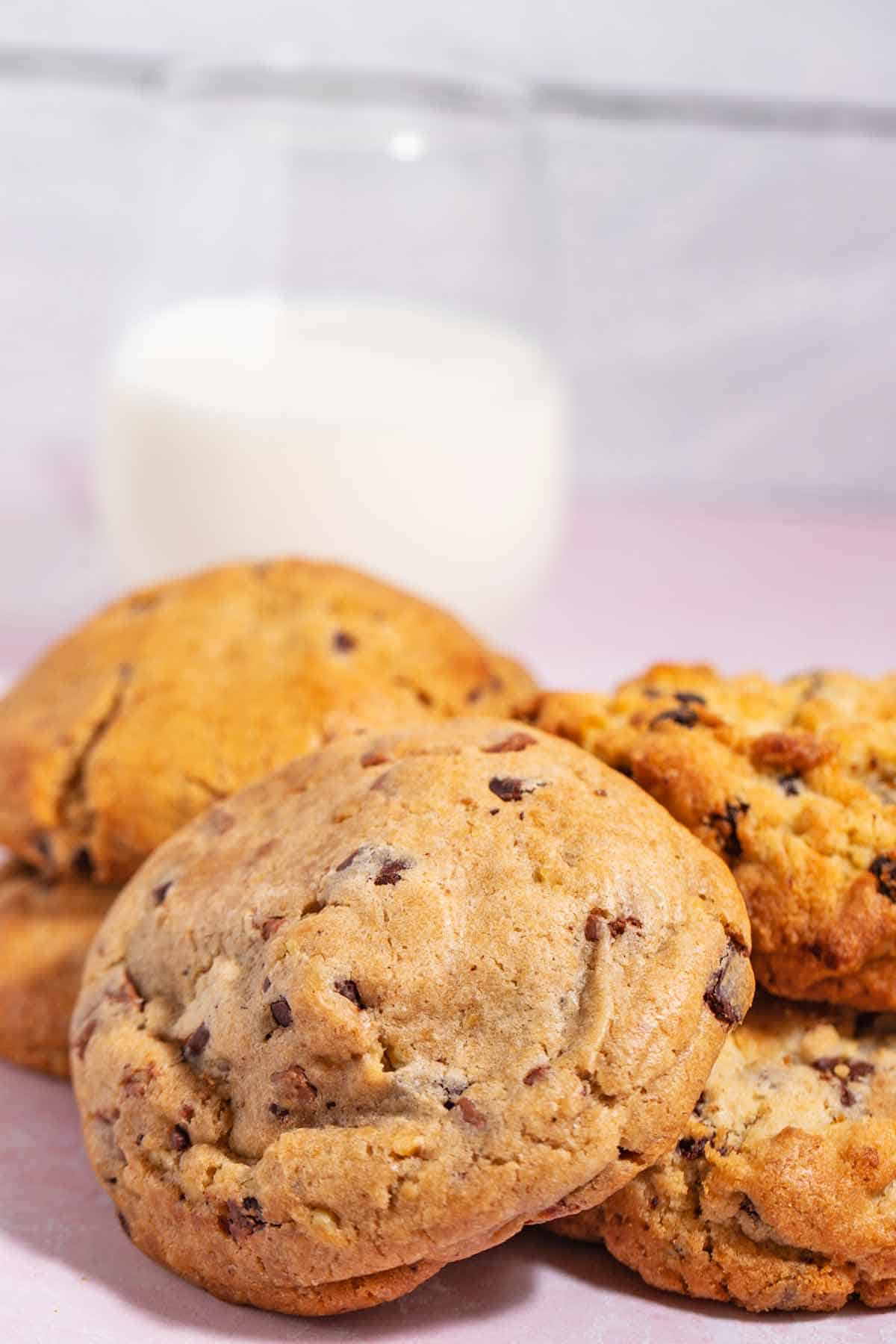
In this article, you will learn more about each characteristic of bakery-style cookies. Plus, you will get tips to make a perfectly baked and professional-looking bakery-style cookie.
What are Bakery-Style Cookies?
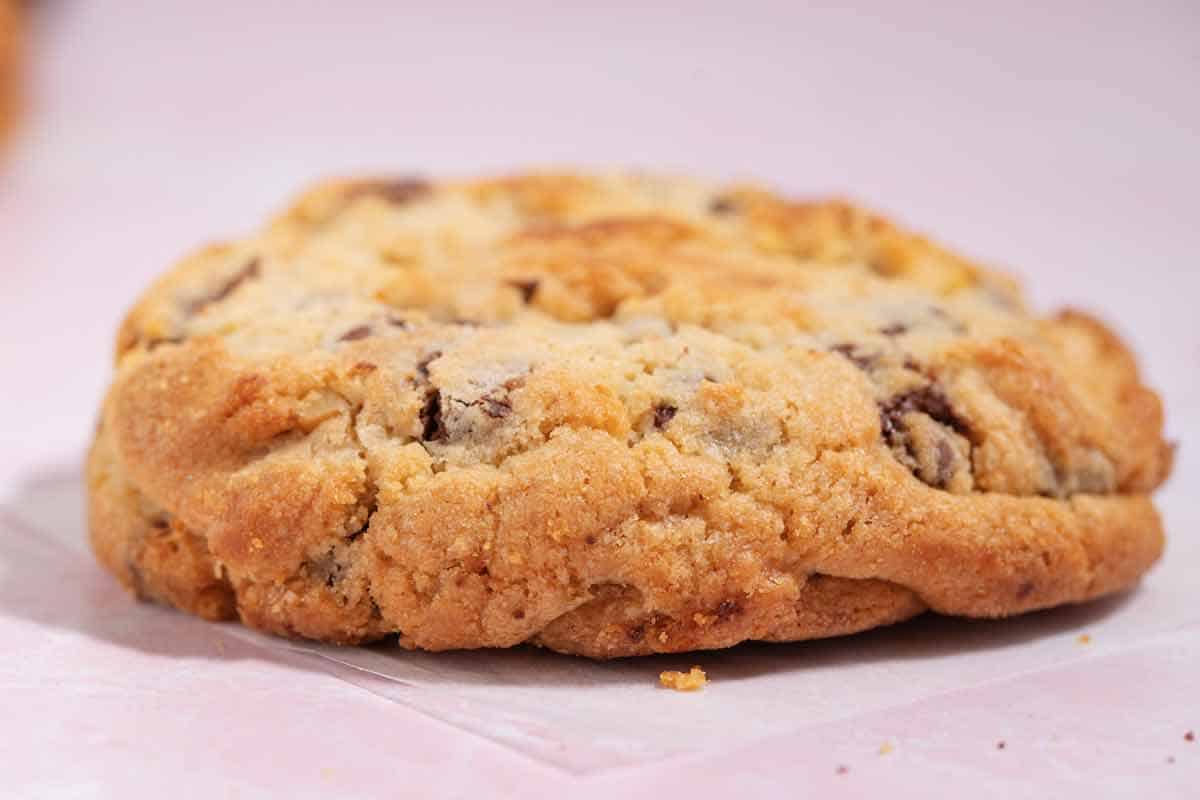
Four criteria make a bakery-style cookie “bakery-style.”
- They are big. Big, as in, it fills your whole fist big. You may even need two hands. The diameter is at least 4 inches, and the height is at least 1 inch (sometimes more). This is the size cookie that fills you up after eating just one.
- They are soft. The ingredient ratios and the temperature of the dough and oven make the cookies bake densely. This means it takes longer for the moisture to dry up.
- They are chewy. Soft and chewy make the best combination.
- They last longer. Specific ingredients in the recipe help the cookies stay fresh longer at room temperature.
Looking for a simple cookie? Try Hershey's classic chocolate chip cookie recipe.
What Size are Bakery-style Cookies?
Bakery-style cookies = big cookies. But how big? What cookie scoop size should you use to make large, thick cookies at home?
First, note that professional bakeries use a scale to weigh the cookie dough. Weighing the dough is the only way they can bake cookies in a uniform size and shape.
If you want precision in your baking, you must invest in a kitchen scale. Read more about why you should use a kitchen scale in baking.
However, if you are baking cookies for your family, you can use a cookie scoop. A cookie scoop is not as accurate as a kitchen scale. But it is better than using a couple of spoons to plop the dough on the cookie sheet.
According to King Arthur Baking, cookie scoops typically come in three sizes for the home baker – teaspoon, tablespoon, and quarter cup. Cookie scoops are meant to help you scoop dough easier and to make uniformly sized cookies. Buy cookie scoops here.
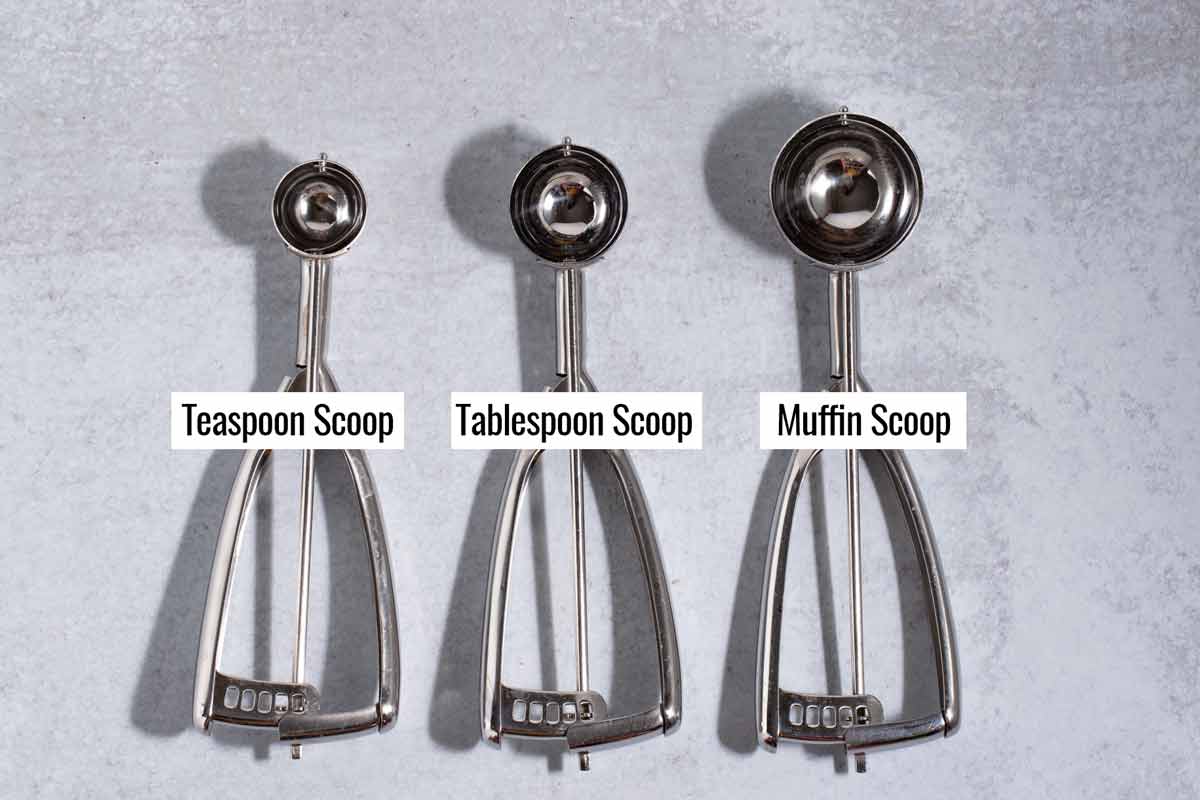
- Teaspoon Cookie Scoop. These scoops hold about 1¾ teaspoons of dough (less than an ounce). They bake up cookies that are 2 to 2¼ inches in diameter.
These are the size of cookies typically made by home bakers. They are a popular size to serve at a cookie buffet, potluck, or cookie exchange. - Tablespoon Cookie Scoop. These scoops hold about 4 teaspoons of dough (about 1¼ ounces). They bake up cookies that are 3 to 3¼ inches in diameter.
These are significantly bigger than the teaspoon size. They are big enough for you to be satisfied after only eating one or two. They are also a popular size to give as gifts to friends. - Big/Muffin Cookie Scoop. This scoop holds about ¼ cup of dough (about 2¼ ounces). They bake up cookies that are 4 to 4¼ inches in diameter.
These are the cookies made for bake sales where individual cookies are sold.
Bakery-style cookies are even larger than homemade cookies made with the muffin scoop. They are often up to 6 ounces pre-baked. They lose moisture during baking, so a typical bakery-style cookie weighs just under 6 ounces.
- Levain Bakery cookies are 4 inches in diameter, 1-inch thick, and when baked, weigh about 5¾ ounces.
- Bang cookies are 3¾ inches in diameter, 1-inch thick in the center, and weigh 5¼ ounces.
- Crumbl cookies are inches 4 inches in diameter, 1-inch thick, and when baked, weigh about 5¼ ounces.
You may also be interested in reading all about bakery-style muffins and other bakery secrets.
What Makes Bakery Cookies Soft?
Bakery cookies have a characteristic softness to them. How do bakeries make their cookies so soft? Bakeries use a few tricks to make their bakery-style cookies soft. Here are some of the industry secrets.
- Modified food starch. Cornaby’s EZ-gel (buy here) or other clear jel products are examples of tasteless, odorless modified food starch.
Modified food starch enhances a cookie’s moisture and keeps the texture soft. It thickens the dough and keeps the cookie from spreading very much as it bakes.
Instant pudding is sometimes a good substitute if you can’t find modified food starch. And honestly, it is challenging to find modified food starch in grocery stores.
Ordering it online has always been the easiest way to get your hands on it. Order here.
- Use cornstarch. Cornstarch helps soften the proteins in the flour. That means your cookie will bake up light and chewy.
Here’s a tip from Bob’s Red Mill: Make a cornstarch slurry before adding it to baked goods, just like you would when adding it to any other recipe.
- Vegetable oil. A combination of vegetable oil and butter (instead of butter only) keeps a cookie softer instead of having crispy edges.
- Shortening. Shortening is made of hydrogenated oil. It is a fat that does an excellent job trapping air bubbles when creamed with sugar. These air bubbles contribute to the rise of cookies, so more shortening means more of a rise.
Shortening also has a higher melting point than butter, meaning the cookie will spread less as it bakes. Finally, shortening shortens the gluten strings making a soft and tender crumb.
The result? When you use shortening, expect thicker cookies with a higher rise.
Cookie Size
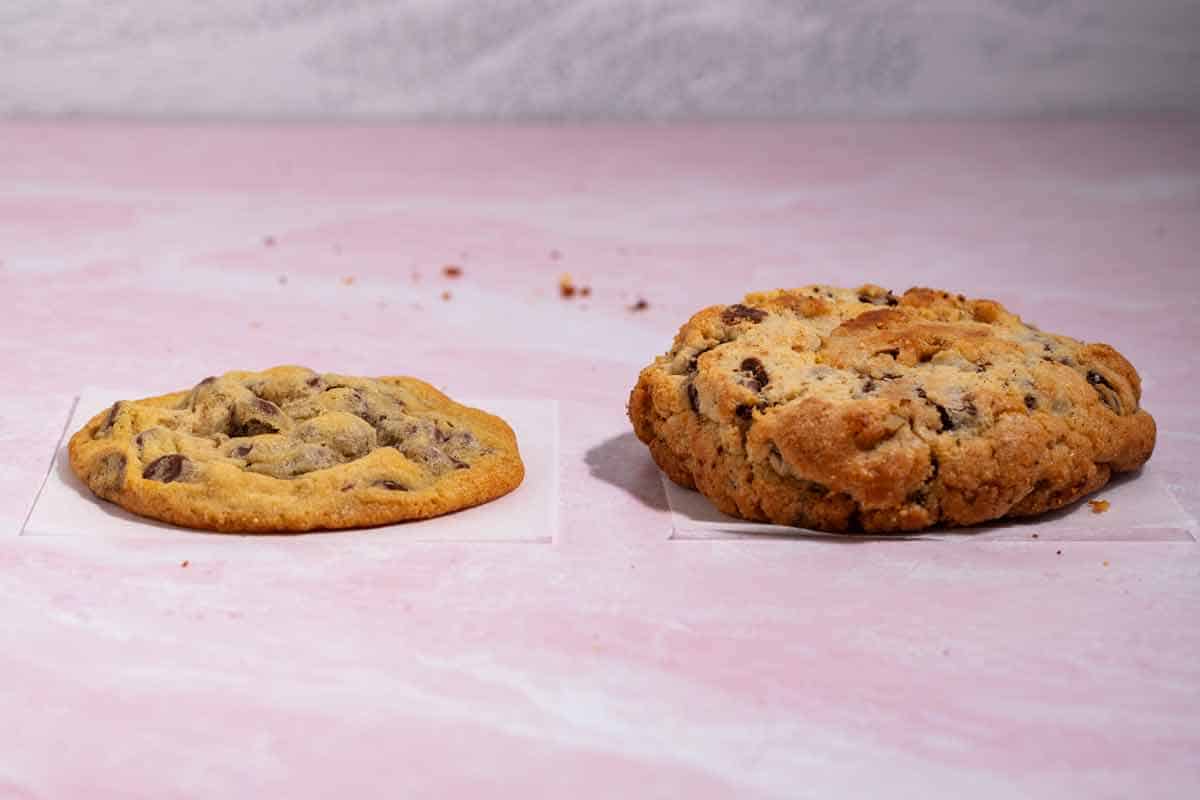
Size plays a role in cookie softness too. The more dough, the denser the cookie, and the longer it takes the moisture (what makes a cookie soft in the first place) to dissipate.
However, several techniques contribute to successfully baking giant soft cookies.
- Bake them in mounds. Bakeries scoop their cookie dough as mounds. Because they are taller instead of flatter, the middle is soft and chewy. They don’t spread out and get crispy.
- Underbake by a couple of minutes. This may seem like a no-no. However, cookies continue to bake even after coming out of the oven. Especially if they are left on the hot baking sheet for a couple of minutes afterward.
- Store in an airtight container at room temperature. Keep the cookie away from oxygen, which can dry it out. Wrapping the cookies in plastic wrap and then placing them in an airtight container is double the moisture protection.
Do you love snickerdoodle cookies? Then you will love this classic snickerdoodle cookie recipe.
Out of cream of tartar? No problem, make snickerdoodles without cream of tartar.
Leftover pumpkin? Try these pumpkin snickerdoodle cookies. One just isn't enough.
How Do Bakeries Keep Their Cookies Fresh?
Many bakeries add ingredients to their cookies which helps keep them fresher and extend their shelf life. Some of these ingredients are synthetic, and some are natural preservatives.
Here are a few examples:
- Antimicrobials. Helps restrict the growth of bacteria and mold. Examples of antimicrobials used in baked goods are benzoates and sorbate.
- Antioxidants. Delays oxidation and helps stabilize fats. An example of an antioxidant used in baked goods is ascorbic aid.
- Chelating agents. Chelating agents bind to heavy metals that can cause oxidation in the food. Examples of chelating agents used in baked goods include citric acid and polyphosphates.
- Enzymes. Amylase enzyme products are effective in preventing staleness. An enzyme can sometimes reduce the amount of sugar or high fructose corn syrup needed for the recipe.
- Starches. Starch helps keep the cookies fresh by keeping the moisture intact and the texture consistent.
- Hydrocolloid. This ingredient causes water particles to bind together, so the drying out process takes longer. The cookie remains fresh longer.
- Prune juice concentrate. Prune juice concentrate is hygroscopic, which means it attracts and holds moisture. Not much is needed for these results. It is terrific to use in chewy cookies.
How to Keep Cookies Fresh at Home
Most of the bakery practices that keep their cookies fresh are not practical to do at home.
For example, synthetic preservatives and additives in baked goods are one of the reasons you like to make home-baked sweets.
If you want to keep your cookies fresh longer, proper storage techniques are the best way to do it. But there are also a few natural additives you have easy access to.
Tips
- Be patient. Wait for the cookies to completely cool before you store them. This goes for both cookies that are meant to be crunchy and softer cookies, like chocolate chip cookies.
- Store cookies in an airtight container after they have cooled. The less air they are exposed to, the longer the cookie will retain its moisture.
- Put parchment paper between layers. Moist cookies may stick and merge together into one giant blob.
- Separate by flavor. Otherwise, the flavors will co-mingle and can become funky tasting.
- Freeze them. If you’ve made a big batch of cookies, plan on eating a few and freezing the rest. This takes the pressure off you to eat them before they go stale.
When you freeze cookies, you can enjoy fresh cookies now and later. It’s good for your tastebuds and good for your thighs.
Wait for them to cool completely before putting them in a freezer bag or container. Don’t forget to squeeze the air out of the bag before throwing them in the freezer.
You may also be interested in this information on how to store chocolate chip cookies. There are tons of valuable tips and tricks to keep the treats fresh for longer.
Natural Additives
If you want to add a natural ingredient to extend the shelf life of your cookies, try these good ideas.
- Honey. Use a bit of honey in place of some of the sugar. In addition to being a natural sweetener, honey also has a high acidity level which helps keep mold at bay. And honey’s higher moisture level keeps baked goods moist and soft.
- Cinnamon. This spice is a natural microbial that can lengthen shelf life and help prevent mold.
- Pectin. Pectin can improve consistency in the cookie and extend shelf life.
Tips To Make Big Bakery-Style Cookies
- Add less sugar but keep the flour at the same amount. The sugar caramelizes, causes crispness, and helps the dough spread out. By adding less sugar, the cookie spreads more slowly and stays denser overall.
- Cream butter and sugar for longer. This helps the dough become aerated, allowing it to hold the height one looks for in bakery-style cookies.
- Use more baking powder than baking soda. Baking soda causes cookies to spread, whereas baking powder gives them a rise. To minimize the spread, use more baking powder.
- Add more chocolate chips (or other fillings) than you would normally. This helps give the dough the extra density needed and adds a sweetness that some people may be concerned about with the reduction in sugar.
- Chill the dough before baking. Cold dough going into the oven will not spread as much. It takes longer for the ingredients that cause the spread to be activated.
- Bake for less time at a higher temperature. The less time the cookies have in the warm oven, the less they will spread out.
Additionally, baking at a higher temperature will give the outside of the cookie the crispiness it needs. At the same time, the inside maintains a softer texture.
- Let the cookie rest. Resting cookies goes a step beyond cooling. When a cookie comes out of the oven, the fats are still melted, the starch is warm, and the sugar dissolves. The cookie sets in the 20 to 30 minutes that it takes cookies to cool.
RELATED: Interested in cookie comparisons? Then check out the snickerdoodle vs. gingersnap guide and the sugar cookie vs. snickerdoodle showdown.
How Do I Make My Cookies Look More Professional?
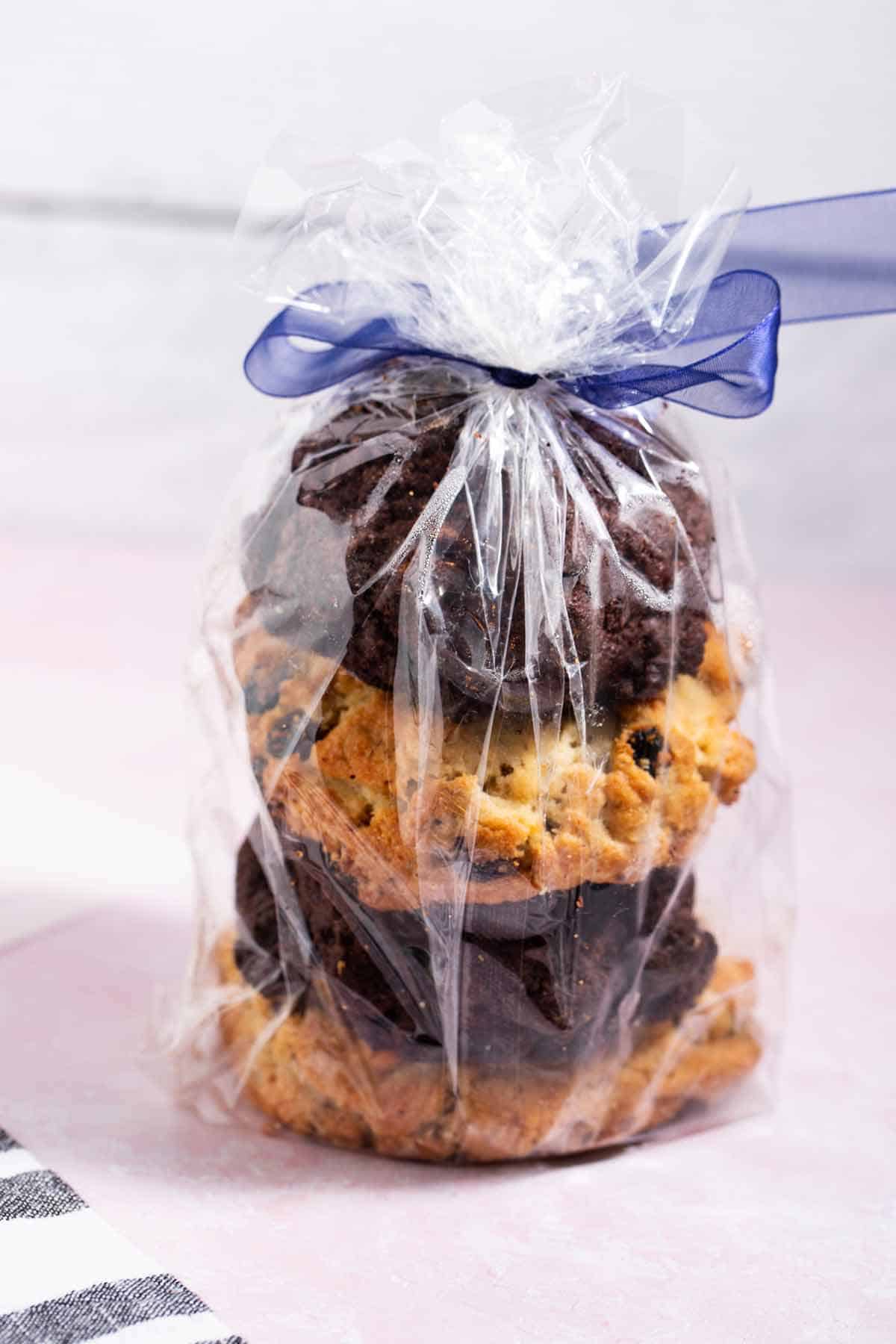
Learning how to make cookies that taste like bakery-style cookies is one thing. But how can you make them look like professional bakery cookies?
Use these simple tips:
- Use a cookie scoop. Using a scoop helps you form your batch of cookies all the same. Cookies look much better when scooped vs. being spooned out. This will ensure that each cookie is the same size.
Plus, they will all bake evenly instead of some being over-baked while others are under-baked.
- Weigh the cookie dough. Weighing the scooped cookie dough keeps the cookies precisely the same size.
- Chill the dough. Chilling the dough before baking helps prevent the cookie from spreading too much. The result? A large, thick, fluffy cookie.
- Use heavy-duty baking sheets + parchment paper (or a silicone baking mat). Heavy-duty baking sheets and a liner help cookies bake evenly to a nice golden-brown color. The cookies don't stick even when they rest in the pan after baking for a few minutes.
- Place each scoop of cookie dough 2 to 3 inches apart. This will ensure that your cookies stay separated instead of spreading into one giant cookie blob.
- Leave at least two inches between the cookie sheet and the oven walls. This will help with even heat circulation.
- If possible, only bake one sheet of cookies at a time. If you must bake more than one sheet at a time, switch their position halfway through. This helps with heat circulation and ensures even baking.
- Err on the side of lower baking time. For example, if the recipe says to bake the cookies for 10-12 minutes, check them at the 10-minute mark.
You can always put them back in the oven for longer if they’re not quite done. But there is no coming back from an over-baked cookie.
- Keep the cookies on the baking sheet for a couple of minutes after removing them from the oven. Cookies will bake for a bit longer through residual baking (carry-over baking). At the same time, the air moving over them will cool and help solidify them. Then you can transfer them to the cooling rack without them crumbling and falling apart.
- Present the cookies professionally. Whether styling the cookies on a platter for a party or giving them in a cookie tin as a gift, presentation is everything. Gifting them in cute cookie bags, boxes, and tins takes the treat up a notch.
Now you know what bakery-style cookies are and what bakeries do to keep their cookies fresh longer. Though not all the tips are practical for home bakers, many can be used at home.
Did you like this post? Then let's be social. FOLLOW ME on INSTAGRAM and PINTEREST to keep up with the latest happenings.

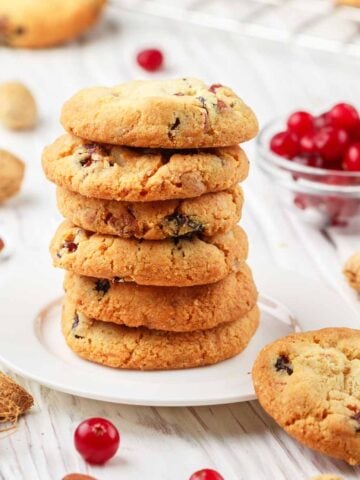
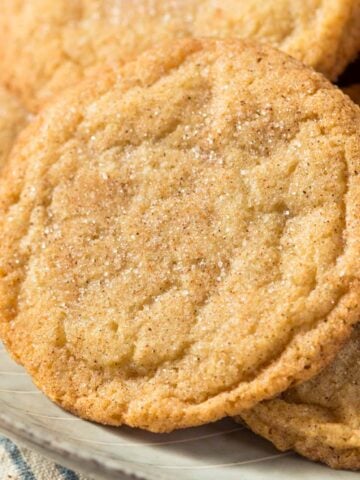
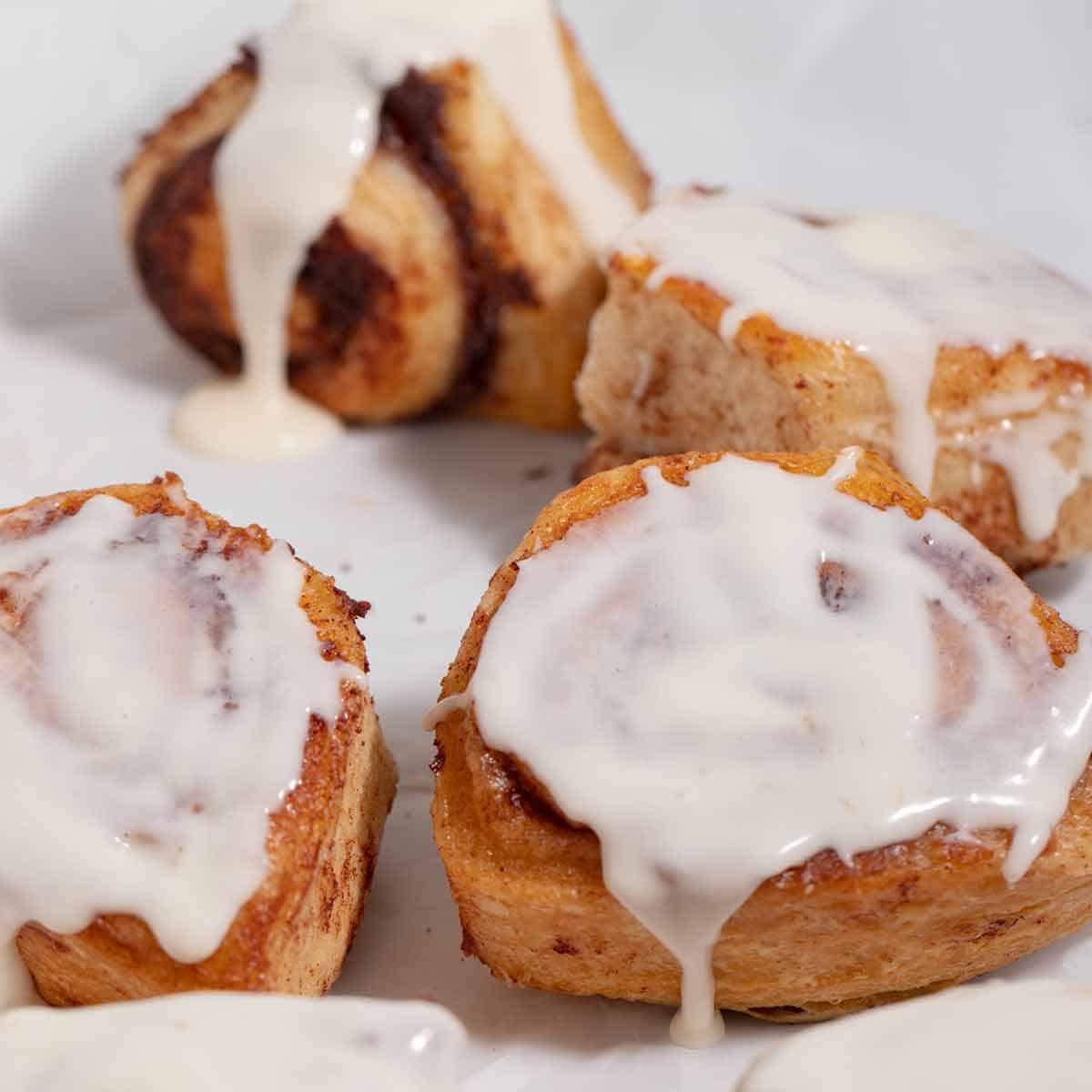
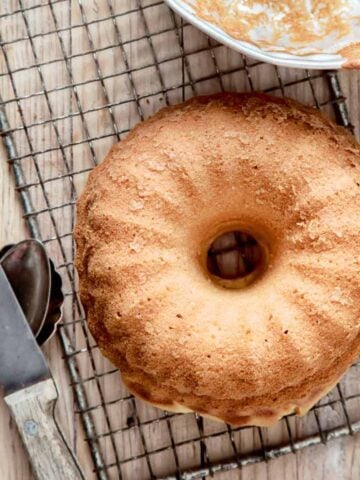
marisa
excellent tips